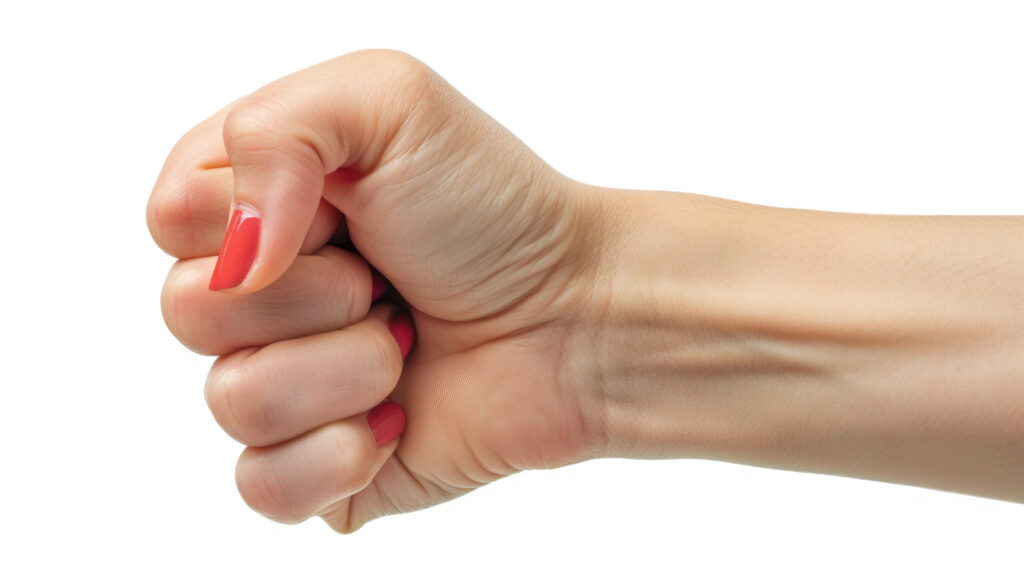
What is De Quervain’s Tenosynovitis?
De Quervain’s Tenosynovitis is a painful condition affecting the tendons on the thumb side of your wrist. It occurs when the two tendons around the base of the thumb become inflamed or constricted within the sheath that surrounds them. This inflammation can cause pain and swelling near the base of the thumb and may result in difficulty moving the thumb and wrist.
Symptoms and Causes
The main symptoms include pain and swelling near the base of the thumb, often worsening with thumb or wrist movement. You might feel a catching or snapping sensation when moving the thumb. Common causes include repetitive hand or wrist movements, overuse, or direct injury to the area. It’s often seen in new mothers, due to repetitive lifting of their infants, as well as in jobs or hobbies that involve repetitive thumb movements or gripping actions.
Treatment Options
Medical Treatments:
- Rest and Immobilization: The first line of treatment typically involves resting the thumb and wrist and using a splint or brace to keep them immobilized, allowing the tendons to heal.
- Nonsteroidal Anti-Inflammatory Drugs (NSAIDs): These can help to reduce pain and swelling in the affected area.
- Corticosteroid Injections: In cases where pain is severe or persistent, corticosteroid injections may be used to reduce inflammation and provide relief.
- Surgery: If conservative treatments fail, surgery may be necessary to release the tight sheath around the tendons, relieving pressure and allowing the tendons to move freely.
Role of Physiotherapy: Physiotherapy plays a crucial role in managing De Quervain’s Tenosynovitis, helping to reduce pain, restore function, and prevent recurrence.
- Manual Therapy: Techniques like soft tissue mobilization can help reduce tension in the tendons and surrounding muscles.
- Stretching and Strengthening Exercises: Exercises that focus on improving the flexibility and strength of the thumb and wrist muscles can help alleviate symptoms and prevent future flare-ups.
- Ergonomic Training: Physiotherapists can offer advice on modifying activities or workstations to reduce strain on the wrist and thumb, particularly for those whose jobs or hobbies involve repetitive movements.
- Advanced Modalities:
- Shockwave Therapy: Helps to reduce pain and promote healing in chronic cases.
- Laser Therapy: Can be used to decrease inflammation and accelerate tissue repair.
- Needling Techniques:
- Dry Needling and Acupuncture may be utilized to relieve muscle tension and enhance the healing process by promoting blood flow and reducing pain.
Frequently Asked Questions (FAQs)
What are the first signs of De Quervain’s Tenosynovitis?
The earliest signs include pain and tenderness at the base of the thumb, which may extend into the lower arm. This pain is often aggravated by activities that involve grasping, pinching, or twisting the wrist.
How is De Quervain’s Tenosynovitis diagnosed?
Diagnosis is primarily clinical, involving a physical examination. The Finkelstein test, where the thumb is placed in the palm and the wrist is bent towards the little finger, can elicit pain in those with De Quervain’s, confirming the diagnosis.
Can De Quervain’s Tenosynovitis resolve on its own?
Mild cases may improve with rest and activity modification. However, without proper treatment, symptoms can persist or worsen, leading to chronic pain and difficulty using the hand.
How long does it take to recover from De Quervain’s Tenosynovitis?
Recovery time varies based on the severity of the condition and the treatment method. With proper treatment, many people see significant improvement within 4 to 6 weeks. More severe cases or those requiring surgery may take longer to heal completely.
Will I need surgery for De Quervain’s Tenosynovitis?
Surgery is generally considered only when conservative treatments such as physiotherapy, splinting, and corticosteroid injections have failed to provide relief. Surgery involves releasing the sheath around the inflamed tendons to reduce pressure.
What activities should I avoid if I have De Quervain’s Tenosynovitis?
Avoid activities that involve repetitive thumb or wrist movements, such as texting, typing, or lifting heavy objects. It’s also advisable to avoid pinching motions or twisting the wrist, as these can aggravate the condition.
Is De Quervain’s Tenosynovitis related to Carpal Tunnel Syndrome?
While both conditions affect the wrist and can cause pain and discomfort, they involve different structures. De Quervain’s affects the tendons around the thumb, while Carpal Tunnel Syndrome involves the compression of the median nerve within the wrist.
Can physiotherapy prevent the need for surgery in De Quervain’s Tenosynovitis?
Yes, in many cases, physiotherapy can effectively manage symptoms and prevent the need for surgery by addressing the underlying causes and promoting healing through targeted exercises and manual therapy.
When can I return to work after being treated for De Quervain’s Tenosynovitis?
Return to work depends on the severity of the condition and the nature of your job. Light duties may be resumed within a few weeks, but full return to activities that involve repetitive wrist and thumb movements may require a longer recovery period, particularly if surgery was performed.
References
1. Abi-Rafeh, J., Kazan, R., Safran, T., & Thibaudeau, S. (2020). Conservative management of de Quervain stenosing tenosynovitis: review and presentation of treatment algorithm. Plastic and reconstructive surgery, 146(1), 105-126.
2. Ferrara, P. E., Codazza, S., Cerulli, S., Maccauro, G., Ferriero, G., & Ronconi, G. (2020, December). Physical modalities for the conservative treatment of wrist and hand’s tenosynovitis: A systematic review. In Seminars in arthritis and rheumatism (Vol. 50, No. 6, pp. 1280-1290). WB Saunders.
3. Ippolito, J. A., Hauser, S., Patel, J., Vosbikian, M., & Ahmed, I. (2020). Nonsurgical treatment of De Quervain tenosynovitis: a prospective randomized trial. Hand, 15(2), 215-219.
4. Chong, H. H., Pradhan, A., Dhingra, M., Liong, W., Hau, M. Y., & Shah, R. (2024). Advancements in de Quervain Tenosynovitis Management: A Comprehensive Network Meta-Analysis. The Journal of Hand Surgery, 49(6), 557-569.
5. Sharma, R., Thukral, A., Kumar, S., & Bhargava, S. K. (2002). Effect of low level lasers in de Quervains tenosynovitis: Prospective study with ultrasonographic assessment. Physiotherapy, 88(12), 730-734.


